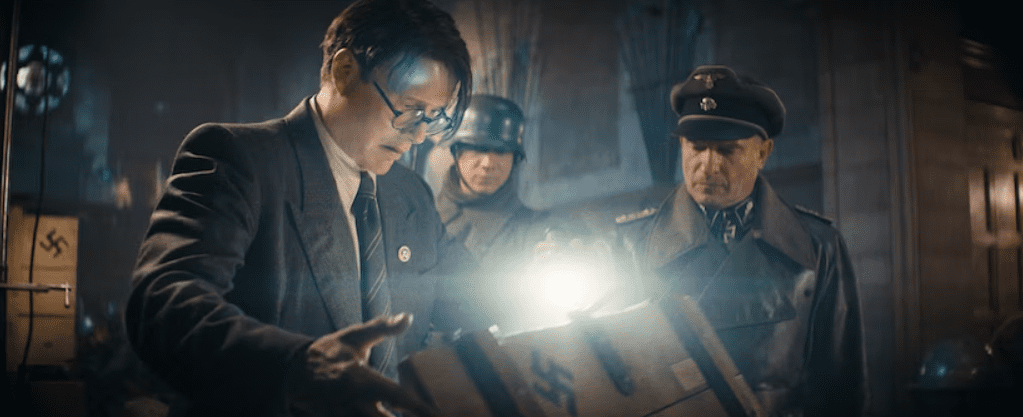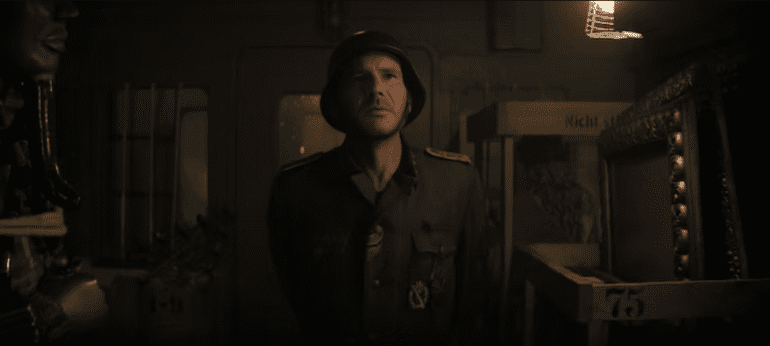TL;DR:
- Disney’s visual effects team successfully made Indiana Jones and his adversary, a Nazi scientist played by Mads Mikkelsen, look younger using their innovative ILM FaceSwap technology.
- ILM FaceSwap is not a simple tool but a comprehensive set of artistic and technological tools that blend CGI, machine learning, and geometry derived from photography.
- The technology has been in development for over 30 years and was used unofficially before, but “Indiana Jones 5” marked its official debut.
- The movie’s extensive flashback sequence necessitated the utilization of all available techniques, pushing the boundaries of visual effects.
- The process involved scanning environments, capturing additional data, and leveraging AI to analyze footage from previous Indiana Jones films.
- FaceSwapping required meticulous attention to detail, particularly with the challenging task of replicating realistic eyes.
- The success of ILM FaceSwap relies on the talent and creativity of the artists behind the scenes.
Main AI News:
In the realm of Hollywood magic, one of the greatest challenges lies in rejuvenating beloved characters for new cinematic adventures. Disney’s latest feat involved resurrecting Indiana Jones, not just in his seasoned form but also revitalizing his adversaries, such as a Nazi scientist portrayed by the versatile Mads Mikkelsen. While the task of making Indiana Jones look young again appeared relatively straightforward, the real test lay in transforming Mikkelsen’s character into a diabolical menace, as described by VFX supervisor Andrew Whitehurst in an exclusive interview with Inverse.
Mikkelsen, recognized for his ability to embody malevolence across various cinematic universes from Marvel and DC to Harry Potter and James Bond, wasn’t always cast with such an overtly villainous appearance. Starting his career with model good looks, the portrayal of a youthful version of his character, Jurgen Voller, in the opening scene of “Indiana Jones and the Dial of Destiny,” required meticulous conceptualization and testing. Rather than striving for an exact replication of Mikkelsen’s features, the visual effects team embarked on a creative endeavor to imagine and visualize what this character would look like as a younger man.
THE PIONEERING TECHNOLOGY BEHIND ILM FACESWAP
This remarkable undertaking exemplifies how Disney, in collaboration with Lucasfilm and Industrial Light and Magic (ILM), continuously pushes the boundaries of special effects technology. In the process of bringing “Indiana Jones and the Dial of Destiny” to life, the team introduced a groundbreaking innovation known as ILM FaceSwap. To gain insights into this revolutionary tool and unearth additional secrets from the making of the fifth installment of the iconic franchise, Inverse engaged in enlightening conversations with Whitehurst, Robert Weaver (ILM’s VFX supervisor), and Ian Kintzle (senior publicist at ILM). Here’s what we discovered.
Contrary to a popular misconception, ILM FaceSwap isn’t a simple button within Photoshop. It represents a comprehensive assemblage of artistic and technological tools meticulously integrated into the filmmaking process of “Indiana Jones and the Dial of Destiny.” As Weaver clarifies, the term “ILM FaceSwap” encompasses a broad range of methodologies and techniques employed to achieve their creative vision.
While the concept of face swapping has been around for decades, with notable instances in films like “Terminator 2” and “Jurassic Park,” the technology has undergone significant advancements since then. Kintzle sheds light on its history, mentioning that it had been informally utilized internally at ILM before, but “Indiana Jones 5” marked the debut of an official, branded version of this cutting-edge approach.
What sets “Indiana Jones 5” apart is the ambitious scope of its 25-minute flashback sequence, which compelled the studio to deploy a comprehensive arsenal of tools at their disposal. From CGI to geometry derived from photography and machine learning, the team harnessed multiple techniques simultaneously to accomplish their creative goals. Whitehurst emphasizes that they conscientiously tapped into every technique developed to date and even explored uncharted territory to ensure the success of this production and pave the way for future endeavors.
THE ART AND SCIENCE BEHIND MAKING INDY YOUNG AGAIN
The process of executing a FaceSwap entails an army of artists, as Weaver reveals that hundreds of dedicated individuals contributed their skills to the endeavor. Fortunately, the project received invaluable assistance from none other than Harrison Ford himself, whose incredible physical shape alleviated concerns regarding the physicality of the character.
Nonetheless, significant challenges persisted. To gather the necessary data, the primary camera employed during filming was equipped with additional cameras to capture supplementary information concerning lighting nuances and intricate details of Ford’s face. Whitehurst explains that meticulous scanning of every environment was conducted to accurately map the spatial layout of the scenes.
Artificial intelligence (AI) played a pivotal role in the process, marking Weaver’s first experience with machine learning. ILM leveraged computers to meticulously analyze footage from past Indiana Jones films, establishing a baseline version of the FaceSwap. This enabled VFX artists to weigh the advantages and disadvantages of different techniques effectively. Furthermore, it offered a convenient means of referencing images from previous installments and other relevant materials, ensuring precise shot alignment in “Dial of Destiny.”
Following the completion of filming and comprehensive analysis of reference materials, the arduous task of rejuvenating Harrison Ford shot by shot commenced. Each sequence posed unique challenges, demanding a meticulous evaluation to ensure accuracy. As Whitehurst explains, it was a journey of scrutinizing each shot and fine-tuning details to evoke the desired impact. Whether it was perfecting a smirk or infusing the right level of sassiness, every frame demanded a discerning eye.
Of all the features, the eyes proved to be the most intricate aspect of the FaceSwap process. Weaver highlights the challenges associated with the eyes, as they serve as a focal point and a window into a character’s soul. In some instances, the team retained the original eyes without alteration, while other shots required complete CGI replacement. Capturing the nuanced emotions conveyed by the eyes, even in still frames, proved to be an art form in itself. The added complexity of occasional blinking further intensified the task at hand.
However, regardless of the advancements in VFX tools and techniques, Weaver firmly asserts that the true driving force behind ILM FaceSwap’s success lies in the talent and creativity of the artists behind the scenes. Technological breakthroughs continue to evolve, but it is the skilled hands and imaginative minds that bring these tools to life and elevate cinematic experiences to new heights.

“Mads Mikkelsen” in Dial of Destiny. Source: LUCASFILM
Conclusion:
Disney’s ILM FaceSwap represents a significant breakthrough in visual effects technology. The ability to convincingly rejuvenate iconic characters opens up new possibilities for storytelling and expands the boundaries of cinematic experiences. This advancement not only enhances the viewer’s immersion but also showcases the potential for further advancements in the market of visual effects. The combination of machine learning, geometry, and artistic craftsmanship demonstrated in “Indiana Jones and the Dial of Destiny” signifies a growing demand for innovative visual effects solutions and highlights Disney’s position as a leader in the industry.

